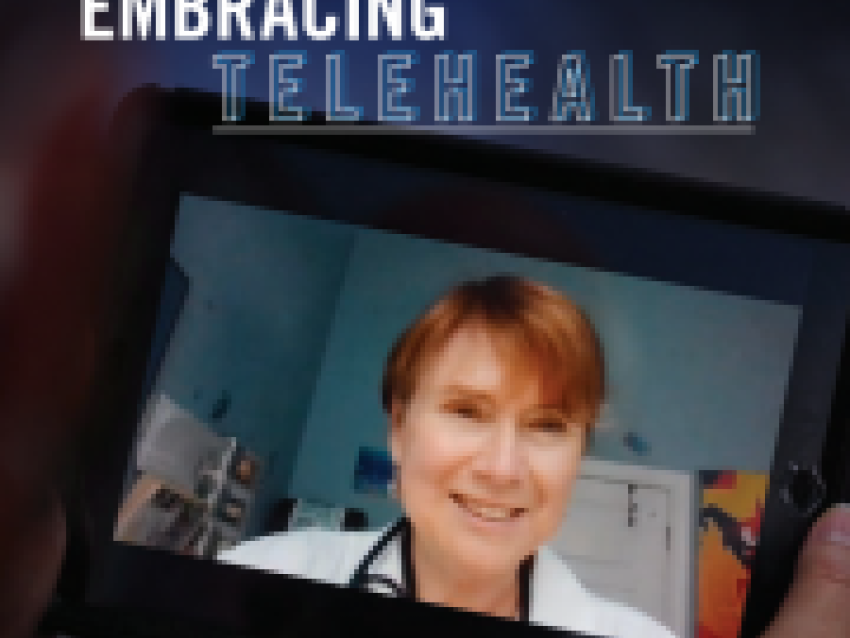
UK Nursing & COVID-19 series: Dr. Julie Marfell on Embracing Telehealth
In March 2021, we officially passed the one-year mark from when the pandemic hit the University of Kentucky and dramatically changed our way of life. We are taking this opportunity to look back at some of the standout stories and people in our UK College of Nursing community who stepped up and inspired us during tough times.
The below article was part of a COVID-19 feature series that was originally published in the 2020-21 Winter Edition of the UK College of Nursing's Engagement Magazine.
***
Some afternoons you’re just as likely to find Julie Marfell, DNP, APRN, FNP-BC, FAANP, in the parking lot of the Phyllis D. Corbitt Community Health Center in Wilmore, Kentucky as you are in the office. Dr. Marfell and the rest of the small clinic’s nurse practitioners head to the cars of patients with COVID-19 symptoms to assess them before bringing them inside.
The precautions—necessary due to the limited size of the small clinic— are just one example of how treatment has changed here since the spread of COVID-19. The clinic is staffed entirely by nurse practitioners from the University of Kentucky College of Nursing under clinic director Dr. Sharon Lock. It’s also a COVID-19 testing site for students at nearby Asbury University.
“Most of the time, if someone has COVID symptoms, they don’t even get in the door. We collect as much information as we can over the phone. We put them all on a schedule in the afternoon so we can just gown up once to limit the amount of PPE we use and head outside,” Dr. Marfell says.
CONVINCING A SKEPTIC
The most significant change COVID-19 has brought to the clinic is the use of telehealth services. The health center had never tried treating patients remotely due to concern over HIPAA requirements and billing obstacles, and at first Dr. Marfell was skeptical. “The first couple of times we did it, I wondered, ‘Am I going to be able to assess the patient as well?’ I was happy to see that, yes, most times I can,” Dr. Marfell says. “You can tell a lot about somebody by their history. It surprised me how much we can do just with seeing someone on their computer or cellphone.”
TELEHEALTH AN UNEXPECTED SILVER LINING FOR PATIENTS
The use of telehealth has provided additional benefits for patients, and Dr. Marfell expects to continue to rely on it. “Sometimes it’s hard for patients to get in because they’re the only person at home with several young children, and if they aren’t able to arrange childcare they end up bringing all their kids into the clinic with them. This way we save them a trip, and they’re able to stay home and get some rest,” she explains.
“We also have some folks who have mental health issues, and with COVID they’re feeling a lot of stress. It’s great that we can see them in their homes and get them whatever kind of treatment they need, whether it’s a referral or help with their medications.”
